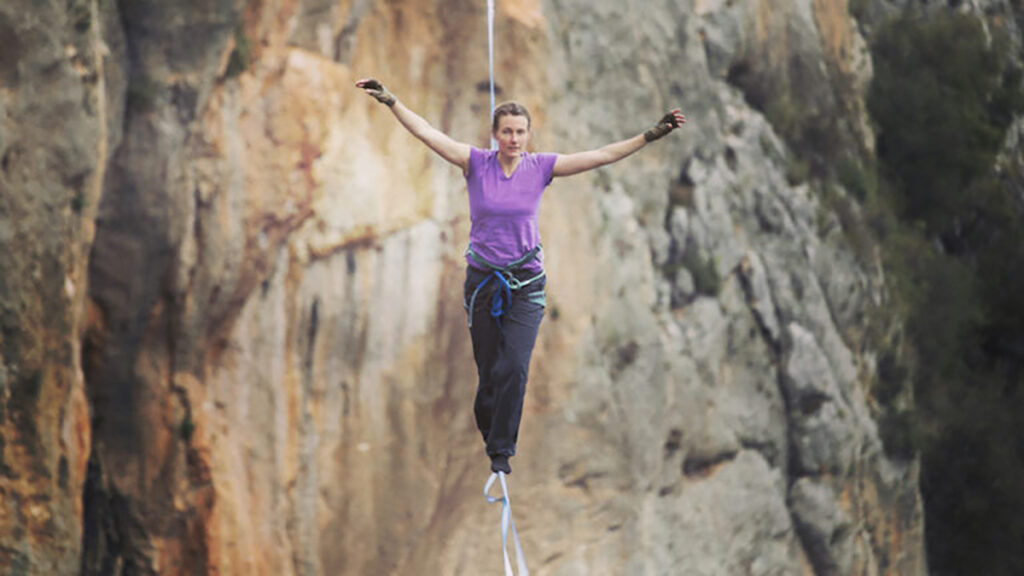Easy! Five, right?
You might think the common conception that we have five senses, and only five senses, is rooted in modern science, but that’s actually an ancient, incorrect idea.
It was put forth by the Greek philosopher Aristotle in a treatise called De Anima.
So much for ancient Greek philosophy. Modern medical science has determined there are definitely more than five, and the total can be surprising. Researchers have counted as many as 32.
Thirty-two? Yes, scientists can count that many by looking at specific structures in the human body known as receptors; that is, cells and organs that can receive and translate signals from the environment.
Here are just a few of the senses beyond the basic five: sight, sound, smell, taste and touch.
Learning about them can expand your own sense of what human beings are, and of the astounding acts of perception we can perform.
How Many Senses do Humans Have?
Vestibular sense
Which way is up? Which way is right or left? The vestibular sense, a set of receptors in your inner ear, is activated whenever you move your head. It’s also activated by the downward force of gravity, giving you a sense of where you are: your grounding.
At the most basic level, it allows you to balance.

The vestibular sense begins to decline at about the age of 40. What people typically call “out-of-body” experiences, when you might feel you’re on the ceiling looking down at your body, can come with migraines, epilepsy attacks and in response to trauma. They may be a sign of a vestibular disorder or something else we don’t yet understand.
As with most body systems, the vestibular sense responds to being used. Anything that challenges your balance, like these exercises, will help build or at least maintain your vestibular sense.
Proprioception
If you extend your arm above your head, you don’t actually need to look at your arm to know that it’s above your head. You have a sense of your body occupying space, and the positions of your various appendages.
Proprioception enables you to touch your finger to the tip of your nose with your eyes closed, or climb steps without looking at them.
The receptors for proprioception are in your muscles and joints, which send information to your brain. This sense is activated any time you push or pull on an object. A child who uses too much force when writing or coloring, for example, may have a proprioception problem.
You can improve your proprioception by walking on a balance beam or stepping stones, or playing any active sport such as football. Try moving around your home with your eyes closed. One study found that doing a series of demanding proprioception exercises while using another skill, like balance, boosted working memory—more so than a yoga class or classroom lecture.
I live in New York City, and it’s still exciting to me to see how New Yorkers move through crowded spaces and don’t smash into each other. Both the vestibular sense and proprioception come into play in what the urbanist Jane Jacobs called our sidewalk “ballet.”
Smart phones distract us, yet the ballet continues.
Temperature Sense
This is somewhat separate from the well-known sense of touch, which gives feedback regarding contact with physical objects.

Nerve cells just below the skin are specifically configured to pick up temperature. But like everything associated with the body and its perceptions, boundaries are not often clear.
Our temperature sensors both respond to and induce other perceptions. A warm room filled with daylight, but at a chilly temperature, may feel even less warm because daylight creates a sensory “expectation” that the warmth is natural and appropriate.
And when we feel physically cold, we may feel more lonely; that is, in need of social “warmth."
Drugs, diabetes, shingles, kidney failure, and other conditions can damage those temperature-sensing nerves, a condition called peripheral neuropathy, which usually affects the hands and feet. The ability to sense temperature may also decline with age.
Inner sensing (Interoception)
Do you have butterflies in your stomach? Are you excited? Or terrified?
Receptors throughout the body send signals to the triangular lobe known as the insula located deep in the brain, the center of interoception, or inner sensing.
This system tells you when you’re hungry and exhausted. It is also essential to understanding your own emotions, which are each a set of body symptoms. For example, when you are angry, your heart rate may increase and your face might feel warm.
About 10 percent of us are especially good at sensing our own heartbeat, a sense called cardiac interoception. This group may also be emotionally intense and better at recognizing other people’s emotions.
On the other hand, weaker inner sensing skills tend to go along with a condition called alexithymia, when you can’t name your own emotions. Weak or inaccurate inner sensing may be linked to depression and anxiety as well.
Children with autism spectrum disorder (ASD) sometimes are weak in interoception; they might not even notice what would be painful for someone else, or they might need to be reminded to eat. Some can’t tell when they feel full.
In short, “self-awareness” is physical. For centuries, Buddhism has linked the practice of sitting quietly and observing your breathing to emotional mastery. Recent science has found that training yourself to feel your heartbeat can cut symptoms of anxiety and discomfort like stomach pains. Vendors of a variety of biofeedback machines claim these can help people sleep and overcome anxiety.
Magnetoreception
Fish (such as the legendary sockeye salmon of Alaska), migratory birds and some animals can detect magnetic fields, a skill that allows them to navigate huge distances. In 2019, a paper appeared describing how some people showed especially strong electrical brain activity in a chamber surrounded by a small manmade magnetic field. Were they especially good navigators? This research didn’t say.

When asked, participants reported that they could not discern when or if any magnetic field changes had occurred. But that does not necessarily mean such changes can't influence internal senses, such as the sense of direction.
Space does not permit exploring all 32 senses; suffice to say the evidence for them is strong.
Learning about them has the salutary effect of expanding your sense of what it means to be human, and can also inspire you to exercise them, keeping them sharp and powerful.
Perhaps the best part of knowing you have (at least) 32 senses is that you can then make a point of enjoying them!







